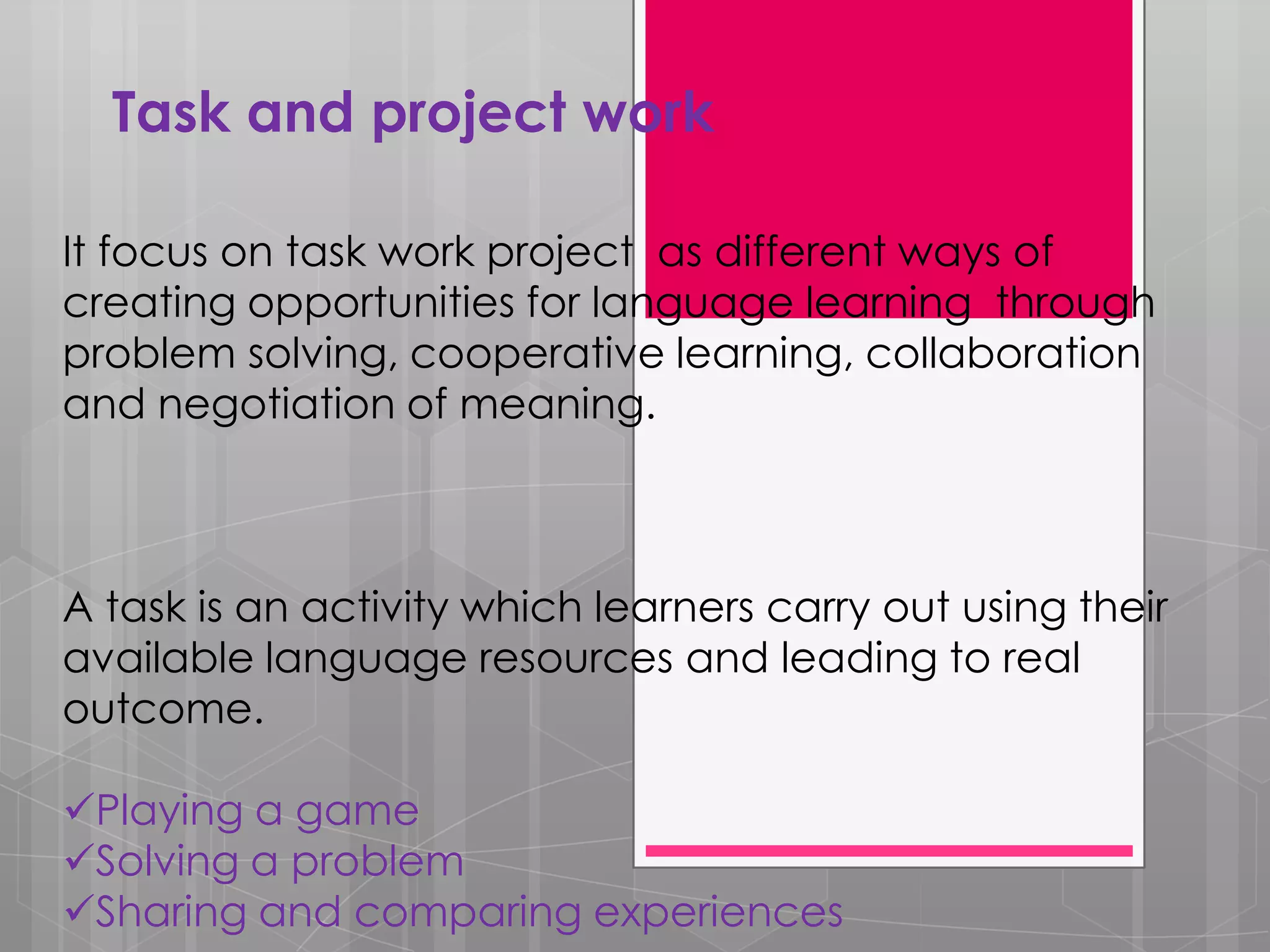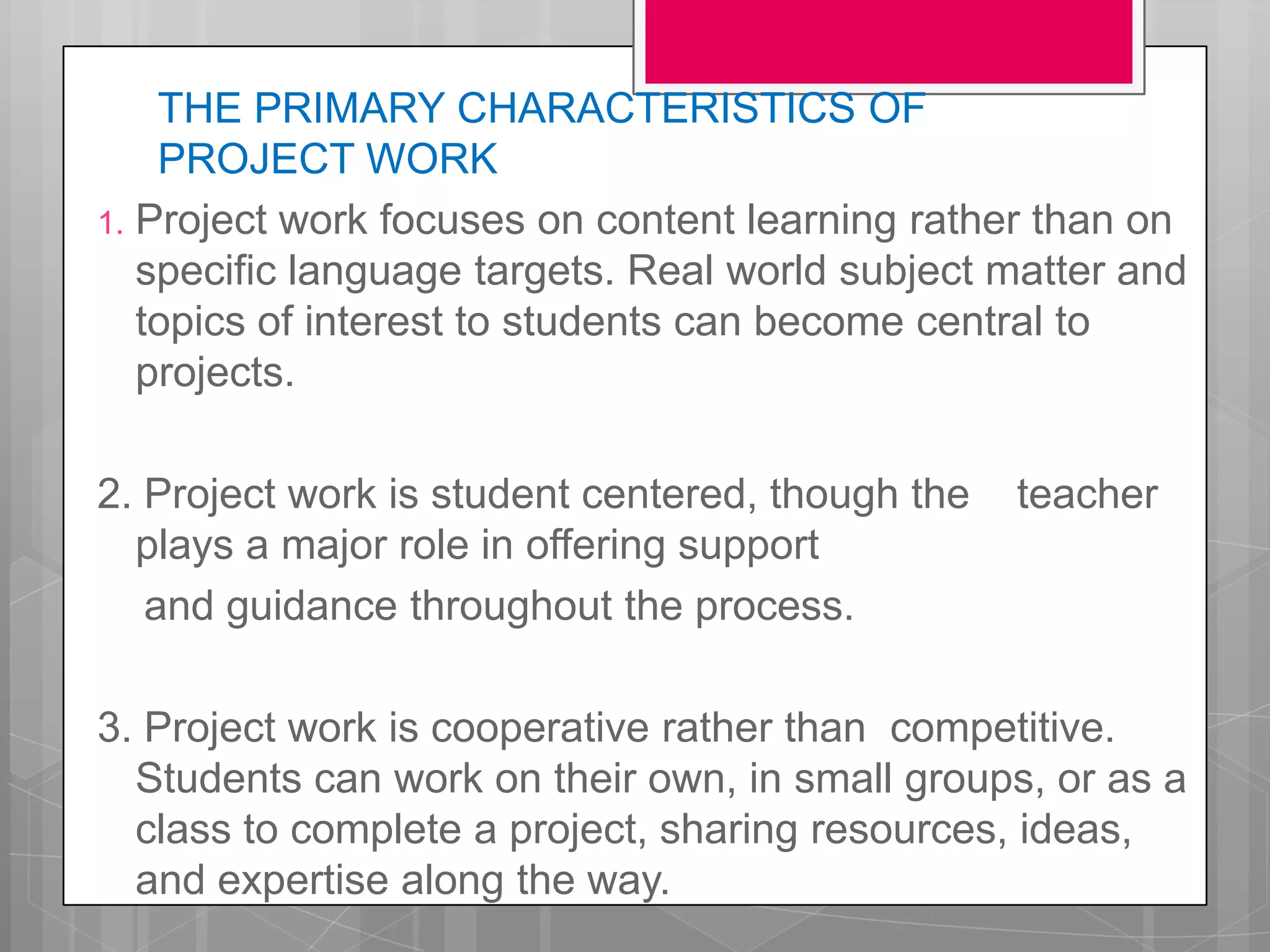The document discusses task-based language teaching and project work. It describes tasks as activities that use students' available language to solve problems or share experiences. Tasks provide opportunities for negotiation of meaning. The document then outlines a 12-week project where students work in groups to choose a topic, design a questionnaire, collect and analyze data, and present their findings. The project aims to provide authentic language use and motivation while developing students' questioning, presentation, and collaboration skills.






























